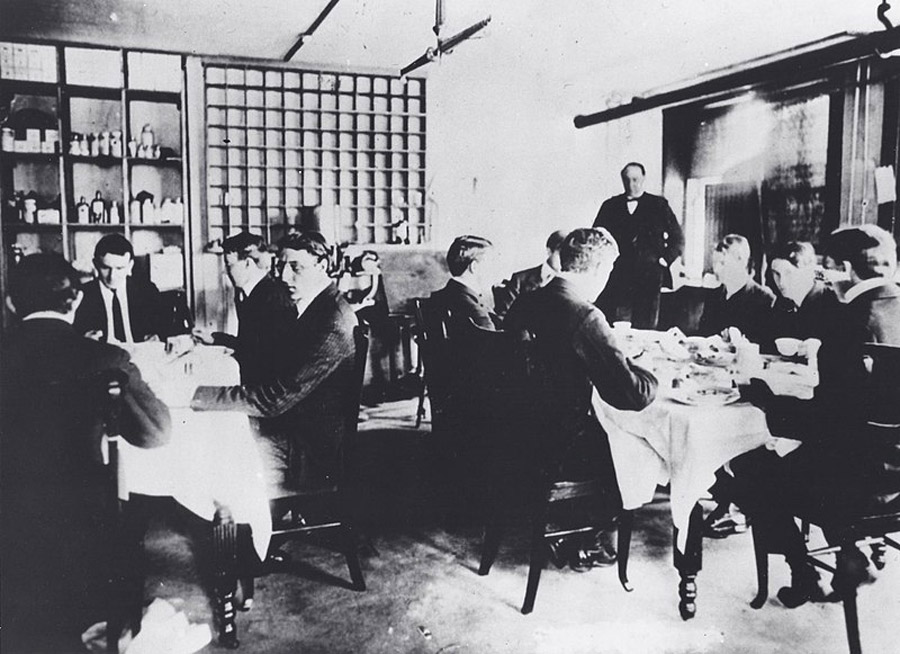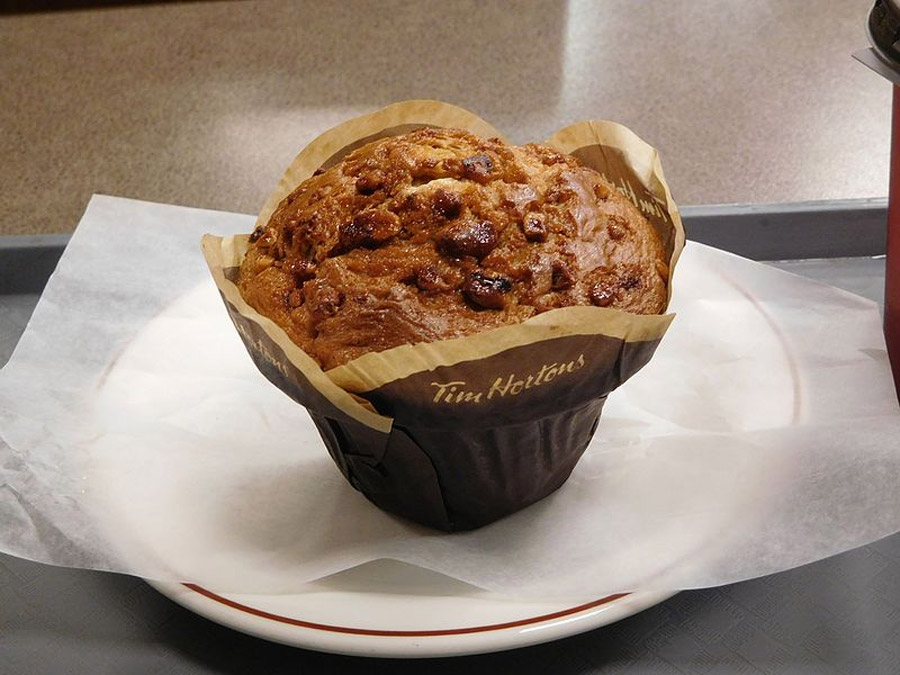Borax, formaldehyde, and sodium sulfate are all chemicals found in cleaning goods. Such toxic ingredients are typically kept under the kitchen sink, far away from the table and anything we would voluntarily put in our mouths.
However, this was not always the case. In the late 1800s, these were common ingredients used in meat and dairy preservation and even found their way into children’s confectionery. All of this would change with a 1902 study by Dr. Harvey Wiley’s 1902, dubbed “The Poison Squad Trials”.
How did this man throw open the door to the failures in America’s food standards and safety?
Food: A Lawless Industry
Powered by the Industrial Revolution, American society as a whole experienced a massive shift. Hundreds of thousands of Americans moved from the countryside, where they had access to fresh produce, to cities, where they relied heavily on mass-produced food.
Big food corporations saw an opportunity to profit exponentially from this demand, with the tools helpfully provided by industrialization. The era of mass market production had begun.
But as always, such rapid growth and development came at a cost, and by the early twentieth century, the food industry in America had devolved into lawlessness. Companies battled one another to be more creative in order to make their products cheaper and longer-lasting.
Mislabeling and little, if any, legitimate testing was commonplace in the industry. Simply walking down the food aisle at your local supermarket could lead to the discovery of dangerous chemicals hidden in seemingly innocuous everyday products.
Some of the products were outright lies. Clay and rocks would be ground up to make flour. Coffee-labelled products contained no coffee and instead contained sawdust and animal bones. Copper sulfate, an agent used to bleach leather, was used to give French peas their rich green color, poisoning consumers in the process.

Other ingredients included “wonder drugs” which we know today to be exceptionally harmful. I common prescription for all manner of ingredients was laudanum, a mixture of opiates and alcohol with severe long-term side effects.
Coca Cola famously originally contained cocaine, an unregulated drug used to provide energy. And the use of dangerous drugs even extended to children, with morphine included in cough syrup.
- Hubert Chevis and the Poisoned Partridge
- Martin Couney: The Fake Doctor Who Saved Thousands of Premature Babies
This came to a head after Dr. Harvey Wiley, an American chemist, conducted a test on maple syrup, a breakfast staple for every American family. Even though the products were advertised as whole maple syrup recipes, nine of the ten syrups he tested contained no trace of maple syrup.
The Poison Squad Trials
But Dr. Wiley was no ordinary consumer. Appointed Chief Chemist of the United States Bureau of Chemistry in 1883, he had spent years studying adulterated food and realized he was in a position where he could effect significant change.
Because the Bureau was part of the United States Department of Agriculture, his studies would receive substantial funding. He had been trying for decades to push for more extensive studies but had received a lot of pushback from food industry lobbyists.
In 1902, Wiley received $5,000 in funding (approximately $143, 000 today). His tests began after he was granted permission to do what was deemed necessary to study food preservatives. The trial was named “hygienic table trials,” but later dubbed by the media as “The Poison Squad Trials”.
Wanted: Volunteers to be Poisoned
It might seem difficult to find people willing to volunteer to eat potentially dangerous chemicals, but the contrary proved true. Armed with the right financial incentives, Wiley received a flood of applications, with one man even writing the following:
“Dear Sir,
I read in the paper of your experiments on diet. I have a stomach that can stand anything. I have a stomach that will surprise you. I am afflicted with 7 diseases. Never went to a doctor for 15 years. They told me 15 years ago that I could not live 8 months. What do you think of it? My stomach can hold anything…”
Participating in the trial from the start seemed like a good bargain. The 12 participants were required to eat whatever was provided to them in exchange for free lodging, food, and a monthly payment of $5.
Many people were drawn to the trial because it allowed them to go about their daily lives while being reimbursed for only eating three meals each day. And who are we to say they were foolish to do so: as the trials proved, they would not have fared much better buying from their local grocers.
None But The Brave Can Eat For Free
Participants were stripped and weighed before entering the eating area, and any changes in their health or vitals were registered and observed. To add to the occasion, they would all dress in their best formal evening attire.

This turned out to make for great photographic content for the press, adding drama to the entire affair. “None but the brave can eat for free,” read a sign on the dining room entrance. A fitting remark given the participants’ exposure to the poisonous concoctions.
Wiley’s initial experiment focused on the effects of Borax, a common household cleaner still widely used as a preservative in the dairy sector. The subjects were rotated every week, with six men eating fresh meals one week and the poison the next.
He noticed after a few months that the participants began to shun any items containing Borax owing to the chemical’s metallic flavor. To make things easy on the subjects, he switched to giving them Borax capsules. The participants reported severe headaches and depression. Concerned for their safety, Wiley had to cut the Borax test short.
The participants were exposed to a range of other preservatives during the trials, including sodium benzoate, sodium sulfate, salicylic acid, sodium benzoate, and copper salts. Some of these had no impact, such as Sodium Benzoate, which the patients didn’t mind taking, making for a painless few months.
Others, though, led to more ominous observations. Only three of the twelve participants completed the Benzoate tests, a chemical that was later discovered to markedly increase the risk of cancer.
The 1906 Pure Food and Drug Act
Due to the invaluable media coverage, the trials were at the center of the American public’s attention. The results were irrefutable so it’s no surprise that in 1907 “The 1906 Pure Food and Drug Act”, long known as ‘The Wiley Act’, was passed.
This act aimed at “preventing the manufacture, sale, or transportation of adulterated or misbranded or poisonous or deleterious foods, drugs, medicines, and liquors, and for regulating traffic therein.” It was a huge moment for Wiley and the participants, who had played a dangerous game in pursuit of the truth.
However on closer inspection, this act did not ban food corporations from selling products laced with dangerous products. It only gave the consumer the information, leaving it up to them to make an informed decision about what they consume. Remember: always read the label!
Has Anything Really Changed?
Although it can be claimed that there are more laws in place to safeguard consumers, under the surface it is clear that the food sector has simply adopted more sophisticated disguises. If you look around the isles of your local grocery store, you may notice that dangerous products are no longer in the food but rather in the packaging.
We still run the risk of eating harmful chemicals. Bisphenol A, a chemical component found in lotions and hairsprays, has been proven to interfere with male genital development. Nitrates present in processed meats have been shown to raise your risk of acquiring cancer.

On a larger scale the United States obesity and diabetic crisis has been shown to have links to the widespread adoption of high fructose corn syrup from the late 1970s. Obtaining natural foods has become more difficult, and processed foods have become the cheaper, easier and more dangerous staple.
It seems the United States, and indeed much of the rest of the world, doesn’t want to solve this problem half as strongly as Dr. Wiley did, a century ago.
Top Image: Wiley (standing, third from left) and the Poison Squad. Source: US Food and Drug Administration / Public Domain.
By Roisin Everard